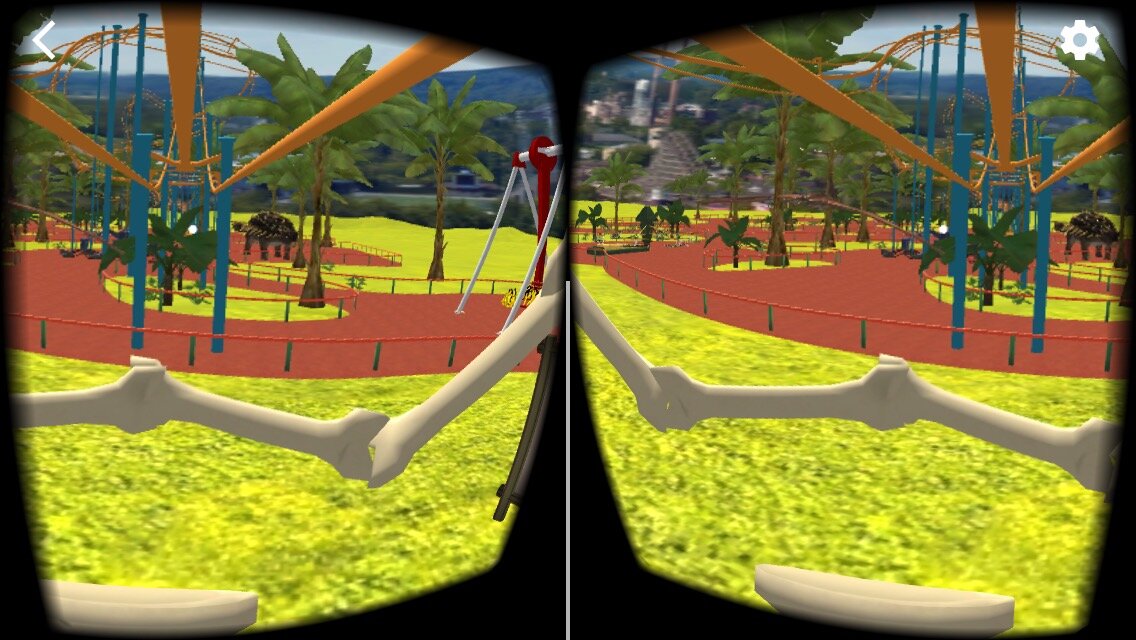BODY ILLUSION IN VR
Believe it or not, your senses can convince your brain it is attached to an arm that isn’t yours! In virtual reality, this helps you believe a virtual body is really your body. Scientists create experiments in VR to study how the senses, brain and body work together—and when they don’t.
TRY THIS!
RUBBER HAND ILLUSION
Materials
2 friends
Medium cardboard box
Scissors
2 soft brushes (make-up, paintbrush, etc.)
Try it
First, you need to create a shielding box. Use the scissors to cut out a hole approximately 5" wide in the lower left corner of the cardboard box. The opposite side of the box should be open. Each side of your box should look something like the images below.
2. Next, friend #1 sits at the table with the left arm outside the box and right arm inside the box.
3. Friend #2 should sit behind friend #1, placing their right arm between friend #1's left and right arm as shown in photo below. (For the person with their arm through the box it looks like their friend’s arm is their own arm.) Put a towel over both right arms.
4. Now, sit across the table and stroke both arms at the same time with a paintbrush. Gradually, friend #1 will think that friend #2's arm is their own arm.
Photo courtesy of Alexander Technique Science
Observe it
How did that make you feel?
Did you believe that the other person’s arm was your own arm?
RIDE A VR DINO ROLLERCOASTER
Materials
Google Cardboard (Here is an example from Amazon)
Smart phone
Try it
Search for VR Jurassic - Dino Park World in the Apple App Store or Dino Park & Roller Coaster Simulator in Google Play and install the app onto your phone.
In the app, select Rollercoaster and then choose one of the two rides available.
Select cardboard view.
Look at the Start button for a few seconds and then the experience will begin.
Observe it
How did that make you feel?
Did you feel that you were really “present” in the experience?
WHAT'S GOING ON?
During the Rubber Hand Illusion, you felt the brush and watched it touch a hand. Those visual and sensory cues told your brain you were looking at your own hand, even though it was your friend's. You may have had a similar reaction using the rollercoaster app on the VR cardboard device. When you turn your head and the images on the screen adjust to your movement, it signals to your brain that you are in the experience.
It is possible for a virtual body to feel like your own body. VR computer engineers are inventing ways for sensors to track other parts of our bodies so we can interact more fully with virtual worlds.
WANT TO LEARN MORE?
Studies of hundreds of participants show that virtual reality can promote lasting positive feelings toward others. Read about the work they have been doing at Stanford University’s Virtual Human Interaction Lab on this subject here.














